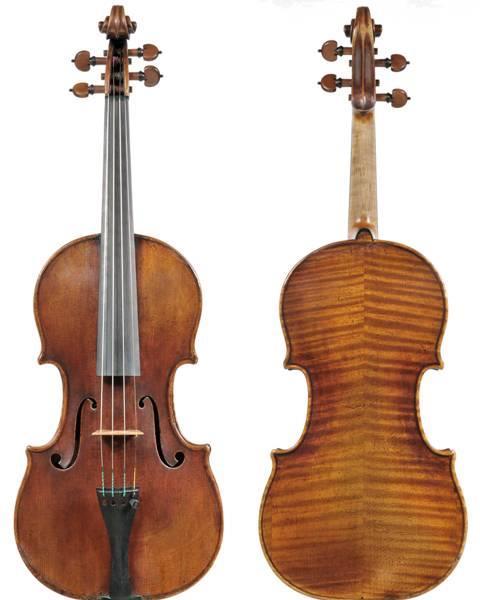The theory that the shape of Italian violin f-holes came about by 'accidental fluctuations' ignores a number of well-known facts, argues Stewart Pollens

In February, researchers at the Massachusetts Institute of Technology (MIT) published a paper entitled ‘The Evolution of Air Resonance Power Efficiency in the Violin and Its Ancestors’ in the Proceedings of the Royal Society. It has sparked a debate primarily with regard to the contention that ‘by evolution-rate analysis... changes [in violin f-hole length] are found to be consistent with mutations arising within the range of accidental replication fluctuations from craftsmanship limitations.’
The claim that the violin’s resonance changed as a result of the accumulation of small ‘accidental’ errors by Stradivarius, Nicolò Amati and Guarneri ‘del Gesù’ and their followers is spurious. While, as the authors of the study assert, it may be true that minor differences in the shape of f-holes are due to the vagaries of handcrafting, the essential shape, dimensions and placement of f-holes have traditionally been governed by rigid proportional ‘rules’ established in Cremona in the early 16th century. Deviation from those rules might be subtle (such as the way Guadagnini occasionally placed the bridge-positioning ‘nicks’ below the centres of his f-holes), whereas gross alterations (such as the simple slots used by Chanot and Savart in their experimental violins) failed, not because they were acoustically ineffective, but because they were visually unaesthetic. Stradivarius used drafting instruments and templates to position and shape his f-holes, hence their regularity. The elongated and open shape of the f-holes carved by Guarneri ‘del Gesù’ in his later years are certainly not because of slips of the knife, nor would violin connoisseurs consider them to be ‘in the expected range of craftsmanship fluctuations’ as the MIT researchers’ calculations would indicate. Rather, they are intentional departures from the norm.
The other controversial conclusions of these researchers are that f-hole length is the primary factor governing the ‘acoustic power’ of violins, and that f-holes steadily increased in length from the 16th century until the death of ‘del Gesù’. They dismiss plate thicknesses (based on averages) and arching height (based on a single height measurement) as of secondary importance, although every violin maker is aware that subtleties of graduation are critical to the tonal characteristics of an instrument. In fact, flat arching is generally associated with a more powerful tone: late ‘del Gesù’ instruments with pancake-flat tops are among the loudest violins. Prior to the development of large symphony orchestras, immense concert halls, and the Romantic and post-Romantic concerto repertoire, brute acoustic power was not the primary goal of violin makers. As a result, violins designed in earlier times were later modified to produce greater volume. This was not accomplished by modifying the f-holes, but rather by re-graduating the top and back plates, changing the neck angle and projection, fitting new bass-bars and bridges, and switching over to modern strings made of high-tensile steel, other metals and synthetic materials.
The paper also contains a graph showing the progression of f-hole length from the days of Amati to Guarneri. The data for this graph is skewed by the eccentric instruments made by ‘del Gesù’ in the last three or four years of his life. Clearly he was on to something, although his instruments are less often copied than those of Stradivarius, despite the world’s continued preoccupation with acoustic power. If the researchers’ graph of f-hole length were to extend to instruments made after the death of ‘del Gesù’ and include makers besides those of the Amati, Stradivarius and Guarneri families, it would revert to the mean, and the lengths of the late ‘del Gesù’ f-holes would just be a blip on the curve. Other blips would include the f-holes of various early Brescian makers, as well as those of the 17th-century Alemannic school.
Photo: the ‘Lipinski’ Stradivarius
Subscribe to The Strad or download our digital edition as part of a 30-day free trial. To purchase single issues click here.








































No comments yet